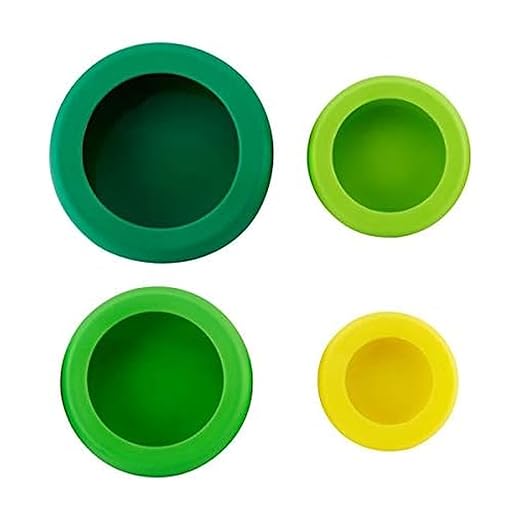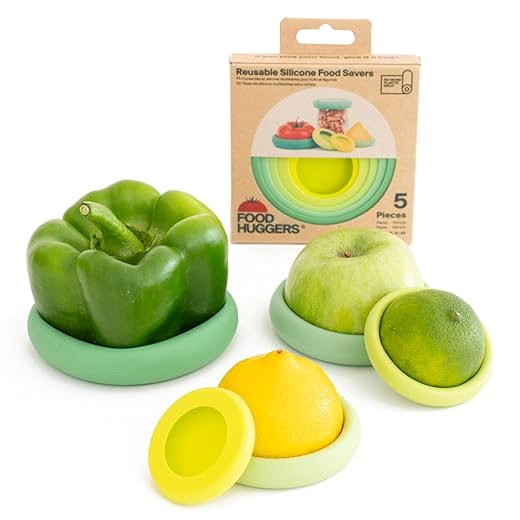Best Food Savers Consumer Reports, Ratings, Reviews, Tips, and Guides in 2022-2023
Food Savers are a great way to save money on food and help the environment. But how do they work? What are the different types of food savers and what are the benefits of using one? This article will give you an overview of the different types and how they work. It will also tell you how to choose the best one for your needs.
Top 10 Food Saversto Buy :
Below is the list of top 10 Food Savers that you can have a look at and buy. Check one by one carefully before purchasing.










*Note: Score is based on our AI score (Editor’s choice and rating)
What is Food Savers?
Food Savers is a company that makes food storage canisters and sealers. They have great reviews and are available at a wide range of stores. The company’s line of products includes canisters, sealers, and starter kits. Food Saver vacuum sealers are dishwasher safe and have many convenient features. They can help preserve everything from cereals and nuts to pantry snacks. The company also offers a five-year limited warranty on their products.
How Does Food Savers work?
FoodSavers work by removing air from food in its bags, which creates a vacuum seal. This vacuum creates a drop in pressure at one point, and an increase in pressure at another. This process is a natural phenomenon, as air is attracted to voids. Thus, the FoodSaver system keeps food fresher and preserves the flavor for longer. In addition, the FoodSaver uses a series of sensors that detect the presence of food in the bags.
The FoodSaver uses plastic bags to vacuum seal the food, and the plastic bag rolls are stored inside the unit. To use, pull out a length of plastic bag, and cut it with a special blade. The first bag off the new roll will be sealed, while the last will fuse the end on top of the previous bag.
A FoodSaver works like a standard vacuum sealer in the home, but it uses a special type of bag that makes it unique. These bags are embossed or textured, and these create channels inside the bag that draw out air and create a vacuum. A heat strip then seals the bag in this state. It is not recommended to use Mylar bags, which have no special channels and thus cannot create an airtight seal.
What Are the Different Types of Food Savers ?
FoodSavers are devices that are used to store food for later use. These devices can be either canisters or zippered bags. Some are retractable, and have a drip tray to catch spills. Both types are made of stainless steel and polymer housing, making them easy to clean.
Benefits of Food Savers?
When choosing a food saver, you should look for a product with multiple sealing modes. Different types of food need different modes for preservation. Make sure you know which ones work best for your needs. The food saver must also have enough space for the food you want to store. There are models designed to fit smaller amounts of food, but it is best to invest in a larger machine if you plan to save larger quantities of food.
Purchasing Food Savers online can be convenient and easy. It allows you to shop from home. It also allows you to avoid leaving the comfort of your bed to go to a store. Moreover, you can order online from all over the world. Often, you can find products you’ve never seen in a physical store.
While most people use food savers to store bulk foods, there are other benefits as well. For example, they can help keep food fresh for longer periods of time. You can also use them for preserving non-food items. This is because a food saver removes air from its package, extending its life significantly.
Factors to Consider Before Buying Food Savers:
When it comes to food savers, there are a few factors you need to consider before making a purchase. Here are eight factors to keep in mind before buying food savers:
1. The type of food you want to save: There are different types of food savers for different types of food. If you want to save meat, fish, or poultry, you’ll need a different type of food saver than if you want to save fruits and vegetables.
2. The size of the food saver: Food savers come in different sizes. You need to make sure you choose a size that’s big enough to accommodate the amount of food you want to save.
3. The price: Food savers can range in price from a few dollars to a few hundred dollars. It’s important to find a food saver that’s within your budget.
4. The features: Some food savers have more features than others. Some features you may want to look for include an automatic shut-off, a timer, and a defrost setting.
5. The warranty: Some food savers come with a warranty, while others don’t. If you’re planning on using your food saver frequently, it may be worth it to choose a model that comes with a warranty.
6. The reviews: Before buying a food saver, be sure to read the reviews. This will help you get an idea of how well the food saver works and what other people think of it.
7. The return policy: Make sure you know the return policy before you buy a food saver. This way, if you’re not satisfied with the food saver, you can return it for a refund or exchange.
8. The brand: There are many different brands of food savers on the market. Do some research to find a brand that you trust and that has a good reputation.
Pros and Cons of Food Savers:
PROS
-Saves you money. If you’re someone who cooks in bulk or often has leftovers, then a food saver can help you save a lot of money. Instead of throwing away your leftovers, you can seal them up and save them for another meal.
-Saves you time. If you’re always running out of time to cook, then a food saver can help you save a lot of time. Instead of having to cook multiple meals, you can cook one big meal and then seal and save the leftovers.
-Keeps food fresh. One of the best things about food savers is that they keep food fresh. When you seal up your leftovers, they’ll stay just as fresh as they were when you first made them.
CONS
-Can be expensive. If you’re not careful, food savers can end up costing you a lot of money. If you buy in bulk or often have leftovers, then you’ll probably be fine. But if you’re someone who doesn’t cook often or doesn’t have many leftovers, then you might want to rethink using a food saver.
-Takes up space. Another downside to food savers is that they can take up a lot of space. If you’re short on storage space, then you might want to reconsider using a food saver.
-Can be difficult to use. If you’re not familiar with how to use a food saver, then you might find them to be a bit difficult to use. There is a learning curve when it comes to using food savers, so make sure you’re prepared for that.
How to Use Food Savers:
Once you’ve decided on the type of food saver you need, the next step is to choose the right size. Food savers come in all different sizes, so it’s important to choose one that’s big enough to fit all of your food. However, you don’t want to choose a food saver that’s too big, as this can lead to wasted space.
Once you’ve chosen the right food saver, the next step is to use it correctly. When using a food saver, it’s important to follow the instructions that come with the product. This will help to ensure that you’re using the food saver correctly, and that you’re getting the most out of it.
When using a food saver, always make sure that the lid is securely closed. This will help to keep the food fresh for longer. Also, be sure to keep the food saver away from heat and direct sunlight. These can cause the food to spoil faster.
Once you’ve used your food saver, be sure to clean it thoroughly. This will help to keep it in good condition, and will also help to prevent the spread of bacteria.
When it comes to food, we all want to save as much as we can. And, with the rising cost of living, we need to find ways to save on our food budget. One of the best ways to save on food is to use food savers. Food savers are great for storing leftovers, as well as for keeping food fresh for longer.
Common Mistakes When Using Food Savers?
One of the most common mistakes that people make when using a FoodSaver is not using the right kind of bag. While this might seem like a small detail, improper storage of food can lead to cross contamination and food waste. The best way to avoid this is to store food in airtight containers. Cooked foods should be wrapped tightly.
Food storage is important to not only avoid food waste, but also to protect yourself from foodborne illnesses. Properly storing food is also important for the taste of the dishes you prepare. Incorrect storage can cause the ingredients to spoil more quickly, resulting in food waste and foodborne illnesses. In addition to improper storage, you also need to store meat properly.
Uncooked meat should never be stored on the top shelf of the fridge. This is because the blood and fluids from raw meat can drip into other foods and contaminate them. Meats should be stored in the bottom shelf of the fridge, away from cooked foods.
FAQs about Food Savers
Do you have questions about food savers? Here are some frequently asked questions that will help you understand everything you need to know about food savers!
What are food savers?
Food savers are devices that help you keep food fresh for longer. They work by creating a seal around food that prevents oxygen and moisture from entering. This helps to keep food from spoiling and going bad.
What are the benefits of using food savers?
There are many benefits to using food savers. They can help you save money by allowing you to buy in bulk and portion out food for later. They can also help you waste less food by keeping it fresher for longer. Additionally, food savers can help you eat healthier by allowing you to cook and meal prep in advance.
How do I use food savers?
Food savers are easy to use! Simply place the food you want to save into the food saver bag and seal it. Then, place the food saver in the refrigerator or freezer. When you’re ready to eat the food, simply defrost it and enjoy!
What are the different types of food savers?
There are many different types of food savers on the market. Some food savers are designed for specific types of food, while others can be used for any type of food. There are also food savers that come in different sizes to accommodate different amounts of food.
What should I look for when choosing a food saver?
When choosing a food saver, there are a few things you should keep in mind. First, consider what type of food you’ll be saving. If you only need to save dry goods like cereal or pasta, then a simple food saver bag will suffice. However, if you plan on saving wet or perishable foods, then you’ll need a more sophisticated food saver like a vacuum sealer.
Additionally, you’ll want to consider the size of the food saver. If you only need to save a few servings of food, then a small food saver will be just fine. However, if you plan on saving large quantities of food, then you’ll need a larger food saver.
Finally, you’ll want to think about the price of the food saver. Food savers can range in price from a few dollars to several hundred dollars. It’s important to find a food saver that fits your budget.
Are food savers worth the investment?
Absolutely! Food savers can save you a lot of money in the long run. They can help you waste less food and eat healthier by allowing you to cook and meal prep in advance. Additionally, food savers can help you save money by allowing you to buy in bulk and portion out food for later.
Conclusion
Food savers can be a great way to reduce the amount of food you waste and save money on your grocery bill. We’ve looked at some of the best food savers based on Consumer Reports tests, and we hope this information will help you make an informed decision about which food saver is right for you. Have you tried any of these food savers? Let us know in the comments how they worked out for you.
See more Tips and Guides:
- How To Sharpen Kitchen Knives?
- How Heat Pumps Work?
- How To Install Gutter Guards?
- How to Vacuum A Pool?
- How To Paint Kitchen Cabinets?
- How Do Air Fryers Work?
- How Do Metal Detectors Work?
- How Long Do Car Batteries Last?
I’m Georgie Barton, a reviewer for various magazines . I’ve been testing and writing about household products and electronics for years, and have become quite the authority on the subject. My goal is to help people make informed decisions when purchasing these items, so they can get the most value for their money.
My hope is that through my work, everyone will be able to find a quality and satisfactory product. Thank you for reading!
